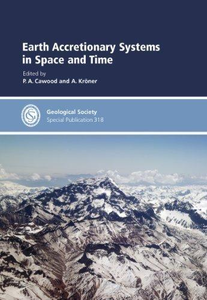Accretionary orogens through Earth history
Cawood, Peter A., Kröner, Alfred, Collins, William J., Kusky, Timothy M., Mooney, Walter D., and Windley, Brian F. (2009) Accretionary orogens through Earth history. In: Cawood, P.A., and Kröner, A., (eds.) Earth Accretionary Systems in Space and Time. Geological Society, London, Special Publications (318). Geological Society, Bath, UK, pp. 1-36.
![[img]](https://researchonline.jcu.edu.au/10659/2.hassmallThumbnailVersion/10659_Cawood_et_al_2009_cover.jpg)
|
Image (JPEG) (cover)
Download (36kB) |
|
|
PDF (Published Version)
Restricted to Repository staff only |
Abstract
Accretionary orogens form at intraoceanic and continental margin convergent plate boundaries. They include the supra-subduction zone forearc, magmatic arc and back-arc components. Accretionary orogens can be grouped into retreating and advancing types, based on their kinematic framework and resulting geological character. Retreating orogens (e.g. modern western Pacific) are undergoing long-term extension in response to the site of subduction of the lower plate retreating with respect to the overriding plate and are characterized by back-arc basins. Advancing orogens (e.g. Andes) develop in an environment in which the overriding plate is advancing towards the downgoing plate, resulting in the development of foreland fold and thrust belts and crustal thickening. Cratonization of accretionary orogens occurs during continuing plate convergence and requires transient coupling across the plate boundary with strain concentrated in zones of mechanical and thermal weakening such as the magmatic arc and back-arc region. Potential driving mechanisms for coupling include accretion of buoyant lithosphere (terrane accretion), flat-slab subduction, and rapid absolute upper plate motion overriding the downgoing plate. Accretionary orogens have been active throughout Earth history, extending back until at least 3.2 Ga, and potentially earlier, and provide an important constraint on the initiation of horizontal motion of lithospheric plates on Earth. They have been responsible for major growth of the continental lithosphere through the addition of juvenile magmatic products but are also major sites of consumption and reworking of continental crust through time, through sediment subduction and subduction erosion. It is probable that the rates of crustal growth and destruction are roughly equal, implying that net growth since the Archaean is effectively zero.
| Item ID: | 10659 |
|---|---|
| Item Type: | Book Chapter (Research - B1) |
| ISBN: | 978-1-86239-278-6 |
| Date Deposited: | 20 May 2010 00:53 |
| FoR Codes: | 04 EARTH SCIENCES > 0403 Geology > 040313 Tectonics @ 100% |
| SEO Codes: | 97 EXPANDING KNOWLEDGE > 970104 Expanding Knowledge in the Earth Sciences @ 100% |
| Downloads: |
Total: 336 Last 12 Months: 7 |
| More Statistics |




